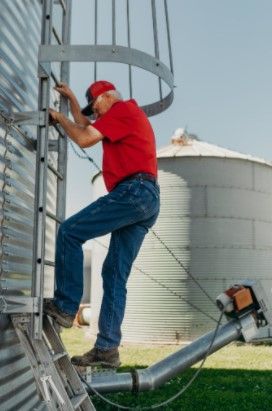As the corn growing season winds down, Nebraska farmers are anxious to begin harvest. Every year as autumn begins, the Nebraska Corn Board and the Nebraska Corn Growers Association reminds farmers and rural residents to “take a second for safety,” in order to prevent accidents and ensure a successful harvest. This year, safety precautions are especially important, as the world continues to deal with the coronavirus pandemic.

According to the CDC, the agricultural sector is one of the most dangerous industries in America. By following safety precautions and having a farm readiness plan in place, farmers can greatly reduce the risk of an emergency.
“As someone who contracted Covid-19 earlier this summer, I can adamantly say this is a virus you want to avoid, and it’s definitely not something you want to get during harvest,” said David Bruntz, chairman of the Nebraska Corn Board and farmer from Friend. “Oftentimes, as farmers, we think our occupations are prime for social distancing. While that may be true, this virus spreads easily, so we need to take precautions, such as keeping our distance from others, wearing masks in public places and washing our hands and using hand sanitizers often.”
Nebraska Corn recommends farmers develop a farm readiness plan in case of emergency. No one can learn the nuances of a farmer’s operation overnight, but having a plan in place will reduce stress in the event of an accident or illness. Once farmers develop their plans, they should place them somewhere where they can easily be found and additional copies can be given to trusted neighbors or friends.
Farm Readiness Checklist
Protect Yourself